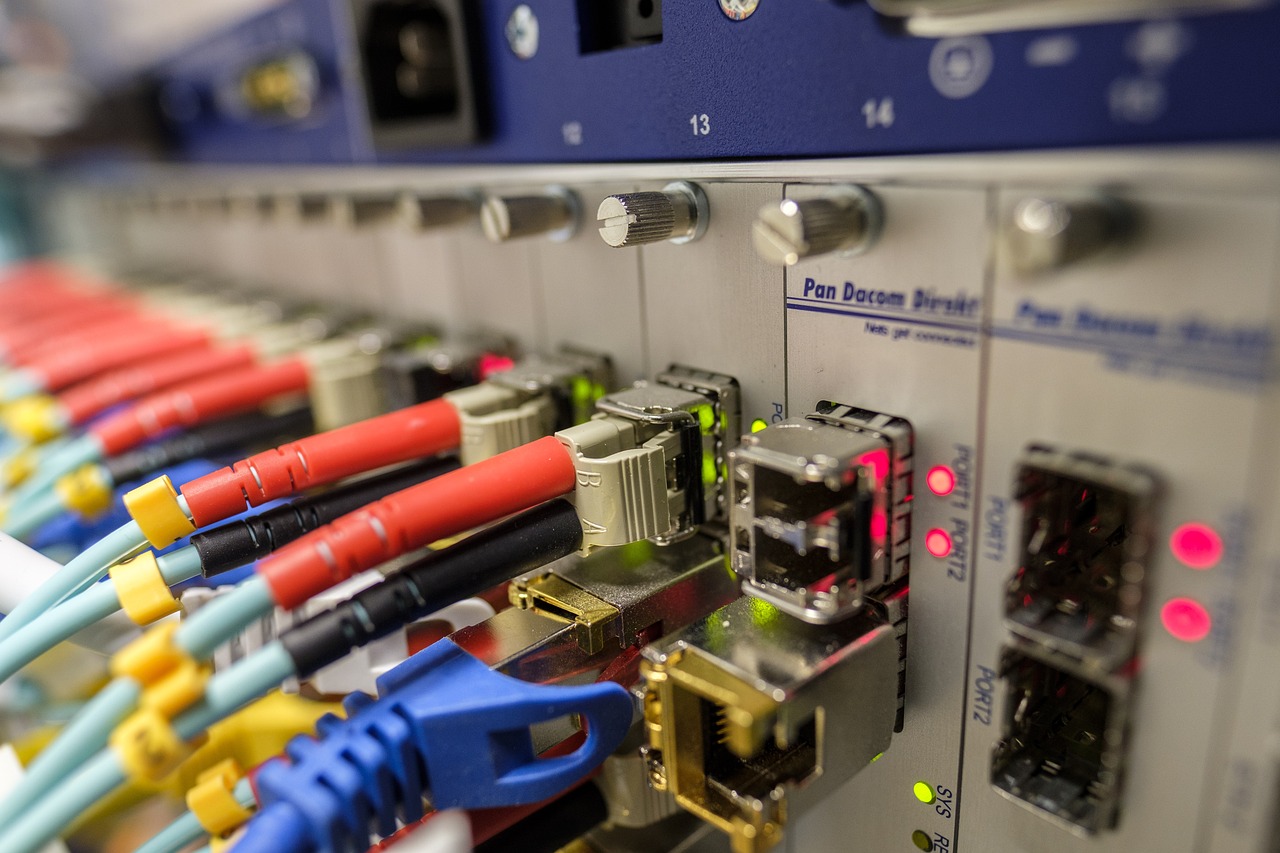The Crucial Advantages of Compact Design and High Stability in Passive Optical Networks

Understanding Passive Optical Networks
Passive Optical Networks (PONs) refer to a telecommunications technology that utilizes point-to-multipoint fiber to the end consumer. Passive Optical Networks consist of three basic components: an optical line terminal (OLT) at the service provider's central office, an optical network unit (ONU) at the customer's premises, and optical distribution network (ODN) for connecting the OLT and ONU. The OLT transmits data to multiple ONUs, enabling efficient sharing of the fiber infrastructure.
The benefits of using Passive Optical Networks are multifaceted. Firstly, they offer remarkable cost-effectiveness by reducing the need for active electronic components in the distribution network. This results in lower power consumption and enhanced energy efficiency, making PONs an environmentally friendly choice for high-speed internet access.
In addition, PONs provide a scalable solution that can accommodate future bandwidth demands without significant upgrades. The streamlined architecture of PONs also contributes to their reliability and robustness, ensuring consistent performance over extended periods.
The Importance of Compact Design in Passive Optical Networks
In the realm of Passive Optical Networks (PONs), the concept of compact design plays a pivotal role in optimizing infrastructure efficiency. Compact design refers to the strategic layout and organization of network components, aiming to minimize physical space requirements while maximizing functionality.
Compact Design Explained
The essence of compact design lies in its ability to streamline network architecture, resulting in space-saving benefits and simplified installation processes. By minimizing the physical footprint of network elements, such as OLTs and ONUs, PONs can be seamlessly integrated into diverse environments with limited space availability. This streamlined approach not only facilitates efficient use of real estate but also expedites deployment timelines, making it an ideal choice for rapid network expansions.
Advantages of Compact Design
The adoption of compact design brings forth a myriad of advantages, notably in terms of enhanced reliability and reduced maintenance overhead. With a more concise and consolidated infrastructure, the potential points of failure are significantly minimized, leading to heightened system reliability. Moreover, the streamlined nature of compactly designed PONs translates to reduced maintenance requirements, as there are fewer components susceptible to wear and tear.
Simplified installation processes
Minimized physical footprint
Heightened system reliability
High Stability: A Key Feature of Passive Optical Networks
In the realm of Passive Optical Networks (PONs), high stability stands as a foundational pillar, ensuring consistent and reliable performance.
Understanding High Stability
The concept of high stability in PONs revolves around maintaining consistent performance and minimizing signal distortion throughout the network infrastructure. This is achieved through meticulous design considerations and stringent quality control measures, which aim to uphold signal integrity under varying environmental conditions and operational loads.
Benefits of High Stability in Local Area Networks
The integration of highly stable PONs translates into tangible benefits for local area networks. By ensuring reliable connectivity and minimal signal disruption, high stability minimizes the occurrence of network downtime and service interruptions. This is particularly crucial in modern digital ecosystems where uninterrupted connectivity is paramount for seamless operations and user experiences.
Consistent performance maintenance
Minimal signal distortion
Reliable connectivity preservation
Lower downtime occurrences
High Uniformity in Signal Distribution
In the realm of Passive Optical Networks (PONs), achieving high uniformity in signal distribution is paramount to ensuring optimal user experiences and network performance.
The Significance of High Uniformity
The concept of high uniformity revolves around delivering equal and consistent signal strength to all users connected to the PON infrastructure. This uniform distribution of signals across the network ensures that each user receives a reliable and stable connection, regardless of their location or usage intensity. High uniformity eliminates potential disparities in signal quality, thereby fostering equitable access to high-speed internet services for all subscribers.
Achieving High Uniformity with Compact Design and High Stability
The realization of high uniformity within PONs is closely intertwined with the strategic integration of compact design and high stability, complemented by innovative technological solutions such as bending insensitive cables. These specialized cables are engineered to maintain signal integrity even when subjected to tight bends or environmental stresses, ensuring consistent signal propagation throughout the network.
By leveraging compact design principles, PON architectures can optimize signal paths and minimize attenuation, facilitating uniform signal distribution across diverse deployment scenarios. Furthermore, the inherent stability of PONs plays a pivotal role in upholding consistent signal strength, mitigating the impact of external factors on signal transmission.
In essence, the harmonious combination of compact design, high stability, and bending insensitive cables culminates in a network infrastructure capable of delivering high uniformity in signal distribution, thereby enhancing user satisfaction and overall network reliability.
Equitable access to high-speed internet
Consistent signal propagation
Optimal user experiences
The Role of FTTx in Leveraging Compact Design and High Stability
Introduction to FTTx
Fiber to the x (FTTx) encompasses a range of optical fiber network architectures that facilitate the delivery of high-speed internet and other communication services to various endpoints, including homes, businesses, and more. The "x" in FTTx can represent different locations such as home (FTTH), curb (FTTC), building (FTTB), or node (FTTN). This versatile infrastructure leverages fiber optic cables to extend connectivity directly to the premises, surpassing the limitations of traditional copper-based networks.
How FTTx Benefits from Compact Design and High Stability
The integration of compact design and high stability within FTTx networks yields substantial advantages, particularly in terms of efficient and reliable fiber optic connectivity. By embracing compact design principles, FTTx deployments can optimize space utilization and streamline network components, enabling seamless integration into diverse environments without compromising performance.
Moreover, the inherent stability of PONs plays a pivotal role in fortifying FTTx networks against signal distortions and environmental fluctuations. This high level of stability ensures consistent signal propagation across the fiber infrastructure, safeguarding the integrity of data transmission and enhancing overall network reliability.
In practical terms, compactly designed FTTx architectures enable service providers to deploy fiber optic connectivity with minimal physical footprint requirements. This streamlined approach not only accelerates deployment timelines but also minimizes infrastructure complexities, resulting in cost-effective expansions and upgrades.
Furthermore, high-stability characteristics empower FTTx networks to deliver uninterrupted connectivity to end-users, mitigating potential downtime occurrences and ensuring sustained service quality. Whether it's delivering high-speed internet access to residential areas or supporting mission-critical applications for businesses, the amalgamation of compact design and high stability positions FTTx as a robust and future-ready solution for next-generation communication infrastructures.
Streamlined integration into diverse environments
Cost-effective expansions and upgrades
Uninterrupted connectivity for end-users
Wrapping Up
Recap of Key Points
As we conclude our exploration of passive optical networks (PONs) and their pivotal features, it's essential to recap the key advantages offered by compact design and high stability.
Enhanced Reliability: Compact design minimizes potential points of failure, contributing to heightened system reliability. High stability ensures consistent performance and minimal signal distortion, leading to reliable connectivity and lower downtime occurrences.
Efficient Space Utilization: The strategic integration of compact design principles optimizes space utilization, facilitating streamlined deployment and minimizing physical footprint requirements. This results in cost-effective expansions and upgrades for future network scalability.
Equitable Signal Distribution: The harmonious combination of compact design, high stability, and bending insensitive cables culminates in a network infrastructure capable of delivering high uniformity in signal distribution. This ensures equal and consistent signal strength to all users, fostering optimal user experiences.
Looking Forward
As technology continues to evolve, the future of passive optical networks (PONs) and fiber to the x (FTTx) holds immense promise. Advancements in compact design methodologies and high-stability architectures are poised to further revolutionize communication infrastructures, paving the way for enhanced efficiency, sustainability, and seamless connectivity. The ongoing pursuit of innovation will undoubtedly shape the next generation of PONs and FTTx networks, ushering in an era of unparalleled performance and reliability for diverse communication applications.
See Also
Benefits of MPO Fiber Optic Trunk Cables for Data Centers
4 Convincing Advantages of Optical Cable in FTTR for Visible Fiber to the Room Configuration
3 Trustworthy 40G QSFP+ Active Optical Cables for Cisco and Arista Switch Compatibility
Essential Characteristics of 144 Cores, 1U, 19” MPO-LC, OM4 Multimode Fiber Optic Patch Panel


